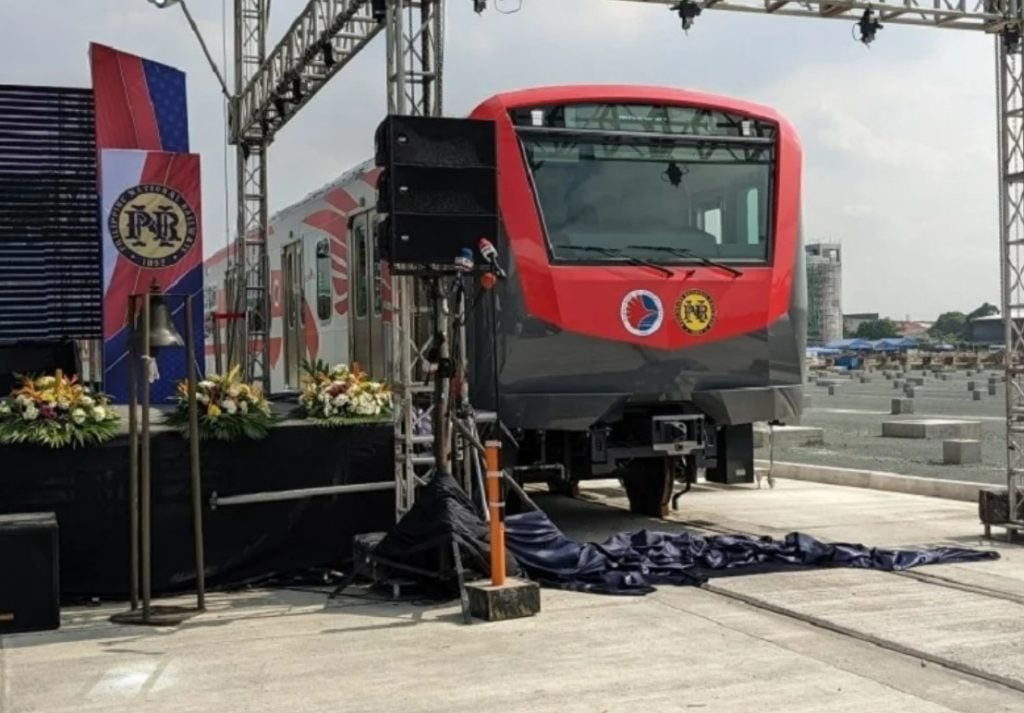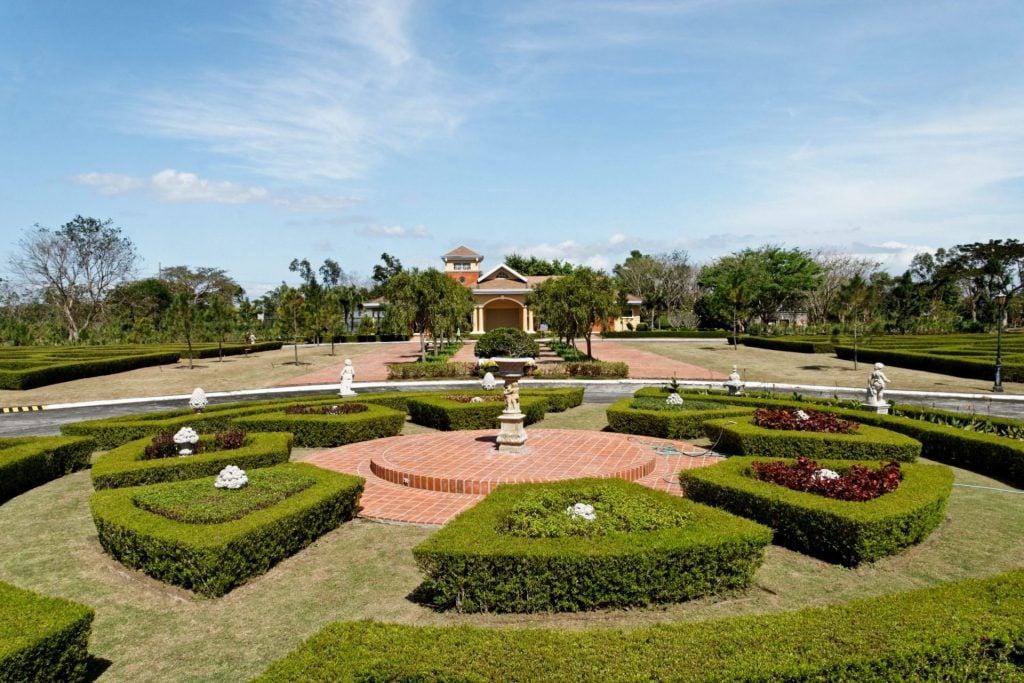BLOGS
Update On The South Commuter Railway In Sta. Rosa
Connectivity and transportation play a massive role in keeping the economy running. When workers can commute easily across vast distances to access employment opportunities, it paves the way for an increase in growth and development.

Today, the majority of workers use public transportation, including buses, jeepneys, and the MRT/LRT system. The drive from their home to their place of business takes hours in traffic. Spending more time with the family or sleeping instead of sitting in traffic would be a better use of the time. Instead, thousands of Filipino employees must endure hours-long commutes.
The South Commuter Railway is an infrastructure project that is meant to alleviate the plight of thousands of Filipinos by cutting down on commute times and allowing more people to travel from southern provinces like Laguna to Manila in a much more time and cost-effective manner.
Things You Need to Know

What is the South Commuter Railway
The South Commuter Railway will connect Manila and Calamba, Laguna, via a station in Blumentritt. Aside from this direct line from Manila to the South, this project will also provide better connectivity in the public transport system by connecting with all existing MRT/LRT lines in Metro Manila. The project is also set to include a tunnel connecting a line of direct trains to the future Metro Manila Subway System.

18 stations from Laguna to Manila
The South Commuter Railway project includes the construction of 18 stations from Laguna to Manila. Inclusivity and accessibility are two factors that are heavily considered throughout the design and construction process. Each station is designed to provide safe access for the elderly, women, children, and people with disabilities. The infrastructure is also designed to be disaster-resilient, with the ability to withstand earthquakes and typhoons.

This new railway line will provide affordable, reliable and safe public transport for more Filipinos, which will significantly cut the journey time by up to 50%. Aside from this, the new line will also reduce greenhouse gas emissions and pollution in accordance with the Philippines’ climate goals.
According to ADB East Asia, Southeast Asia, and the Pacific vice-president Ahmed Saeed, “This project represents ADB’s biggest infrastructure investment and reflects our commitment to helping the Philippines attain its goals of reducing poverty, decreasing road traffic congestion, improving the lives of Filipinos, and achieving green, resilient, and high economic growth.”
Funding for the South Commuter Railway Project
Recently, representatives from the Asian Development Bank announced their approval of a $4.3 billion loan for the construction of the South Commuter Railway. The funds from this project will be used to build approximately 55 kilometers of a modern suburban railway connecting Metro Manila and Laguna.
The loan will be made available in several tranches, with the first tranche to be granted in 2022 for $1.75 billion. The second tranche is anticipated for 2024, and the third tranche is expected to be granted in 2026.

But the Asian Development Bank is not the only one financially backing this project. The bank will pay for the construction of depot buildings, the railway viaduct, stations, bridges, and other relevant structures. However, funding for rolling stock and railway systems will fall under the jurisdiction of the Japan International Cooperation Agency (JICA). A bigger Infrastructure Flagship Project (IFP), the North-South Railway Project, includes the South Commuter Railway Project.
The North-South Railway Project
Project Background
The North-South Railway Project (NSRP) is a government project meant to improve economic and urban growth in several regions by providing connectivity through a world-class passenger rail service that can accommodate more commuters and shorten travel time between different provinces and cities.
The development of the NSRP is set to rehabilitate and revitalize a substantial portion of the old national railway network while also building additional stations. This project will provide long-distance rapid transportation across different regions in Luzon.
This railway project aimed to provide a more efficient transportation and logistics service between rapidly growing urban regions in the country. The project originates in Metro Manila, the densest city in the Philippines, with a population of about 12 million residents. Luzon, which this train line will attempt to link, has approximately 48 million people.
The NSRP is composed of two train lines, the NSRP North and the NSRP South. The North-South Commuter Railway is a 147-kilometer transit system and a key component of the entire project.
Suggested Read: Why Remote Work Should be Normalized
Suggested Read: Daang Hari Biking Routes
History of Plans and Approvals
The Department of Transportation (DOTr) officially launched the North-South Railway Project in July 2015. This marked the start of the bidding process for the Manila-Legazpi section of the South Line.

The Philippine National Railway (PNR )used to have a functioning service between Tutuban and Legazpi. But due to structural integrity issues along the line, the Tutuban-Legazpi route has been suspended since October 2012.
The 56-kilometer Tutuban-Laguna line was also temporarily suspended until 2015. This rail service also includes a daily commuter rail from Naga to Sipiocot, which is 35 kilometers long. The completion of the NSRP South Line is essential in solving the connectivity issues between these regions.
NSRP North Line
The North Line of the NSRP will link Metro Manila to the north and north-eastern regions of Luzon. This 266-kilometer long-haul line from Manila to San Fernando in La Union will also have an extension and branch line.
The extension line is set to connect San Jose, Nueva Ecija to Cagayan. On the other hand, the branch line will connect the Tarlac province to San Jose City, Nueva Ecija.
Funding for the first phase of the North Line will be provided by the Japan International Cooperation Agency (JICA). This phase of the project includes the commuter line that will connect Tutuban and Malolos.
NSRP South Line
The Philippine government has implemented a “Build! Build! Build!” program focusing onn the construction of major infrastructure. The NSRP South Line is a major infrastructure projects under this program and it is expected to be the primary rail line that links Metro Manila to the different provinces of Southern Luzon.

In addition to building 15 stations and three depots, the development of the NSRP South Line also entails repairing and rebuilding more than 420 bridges. Six eight-car trains with spares will be used to serve the new line on multiple unit rolling stock powered by diesel.
The South Line project is divided into two sections
The South Line project is divided into two sections: the South Commuter Railway Project (SCRP), which runs from Tutuban to Laguna, and the South Long-Haul Project (SLH Project), which runs from Muntinlupa in Metro Manila to the Municipality of Matnog.
The SLH Project will have a route of about 561 kilometers that will connect various municipalities, cities, economic zones, and international airports. The SLH Project also plans to expand further into other parts of Southern Luzon.
The North-South Commuter Railway Project
The North-South Commuter Railway (NSCR) project is to be built on the Philippine National Railway’s legacy track. A project backed by Japan and the Asian Development Bank, it will link several growing urban centers to Metro Manila. Clark and New Clark City in the North will connect to Metro Manila and then further on to regions south of the capital like Laguna.
This commuter railway line is comprised of a 38-kilometer section between Tutban and Malolos, a 53-kilometer Malolos-Clark line, and the 55-kilometer southern line from Blumentritt to Laguna.
The Impact of the North-South Commuter Railway
Metro Manila has become the central hub for the economy, housing thousands of business establishments and several business districts. Most individuals work in Manila but reside in cities and provinces outside of the capital. As a result, to get to and from their place of work, they have to speed long hours on the road, whether by private vehicles or using public transport.
Currently, transport between different provinces is slow and cumbersome, making it difficult for investors and employees to access economic opportunities outside the capital. By making transport more efficient, we can make it easier for people to move to and invest in different regions, promoting economic growth and development throughout the country.
In addition, improving transportation infrastructure will also have a positive impact on tourism, as it will make it easier for people to visit different parts of the Philippines. Overall, better transport infrastructure is essential for promoting economic development in all regions of the country.

This increased connectivity improves job opportunities for people living in or out of Manila. The South Commuter Railway is designed to have 18 stations between Blumentritt and Laguna, and this railway will pass through 10 thriving economic cities. The resulting interlinking of these economic hubs will mean more growth for the cities involved.
Aside from helping workers commute easier and faster, this railway project can also benefit the tourism industry because it can make travel between different regions more efficient and convenient for tourists.
Opening up the regions outside Manila and connecting the northern provinces with the south will make for a more connected society that can encourage development across the board.
Suggested Read: Why Do People Prefer Working From Home Amid Office Return?
Suggested Read: Ideal Bicycle for your preferred location
Build a Life In Sta. Rosa Laguna
The once sleepy provincial town of Sta. Rosa has now become one of the fastest-growing economic hubs in the country. It is now home to a thriving community with top-notch schools, hospitals, and luxury residences. Brittany Sta. Rosa has been leading the way in growth and development of luxury housing in Laguna. As Vista Land’s luxury real estate arm, Brittany Corporation is known as one of the best luxury developers in the country.

Brittany Sta. Rosa has built world-class luxury communities inspired by the architecture and culture of some of the world’s most beautiful locations.
Promenade
The Promenade is one of Brittany’s luxury enclaves, and it is inspired by the charm of the quaint English countryside. This luxury community welcomes residents to beautiful English-style manors. The community also features several landscaped hedge gardens patterned after some of the most beautiful royal gardens in the United Kingdom.

Augusta and Georgia Club
Augusta and Georgia Club, on the other hand, is Brittany’s American-inspired exclusive community. The homes in these luxury enclaves take architectural inspiration from the American south. Luxury homes at Augusta and Georgia Club are spacious, full of light, and have several colonial architectural details.

With the development of the South Commuter Railway, Brittany luxury developments in Sta. Rosa becomes more accessible and more connected to the other regions of Luzon. Make your dream luxury lifestyle in the south a reality.
Invest in a Brittany Luxury Home
Invest in a Brittany luxury home in Sta. Rosa today! Explore our website to discover more about the many Brittany Sta. Rosa residential developments. You can also check our luxury property listings in Tagaytay and Alabang. Follow Brittany on LinkedIn and Youtube for more updates.
Grow your professional career with Brittany Corporation. Work with the best in the luxury real estate industry. Check our Seller’s Portal for more information.























